Grow bags for tomatoes are a good solution for urban gardeners that may not have a large garden plot.
The main advantages of growing tomatoes in grow bags is they are porous (breathability), they are economical, and they can be moved around to the best growing location.
This guide will help you determine the right size of grow bag, and give tips for growing those popular heirloom tomatoes.
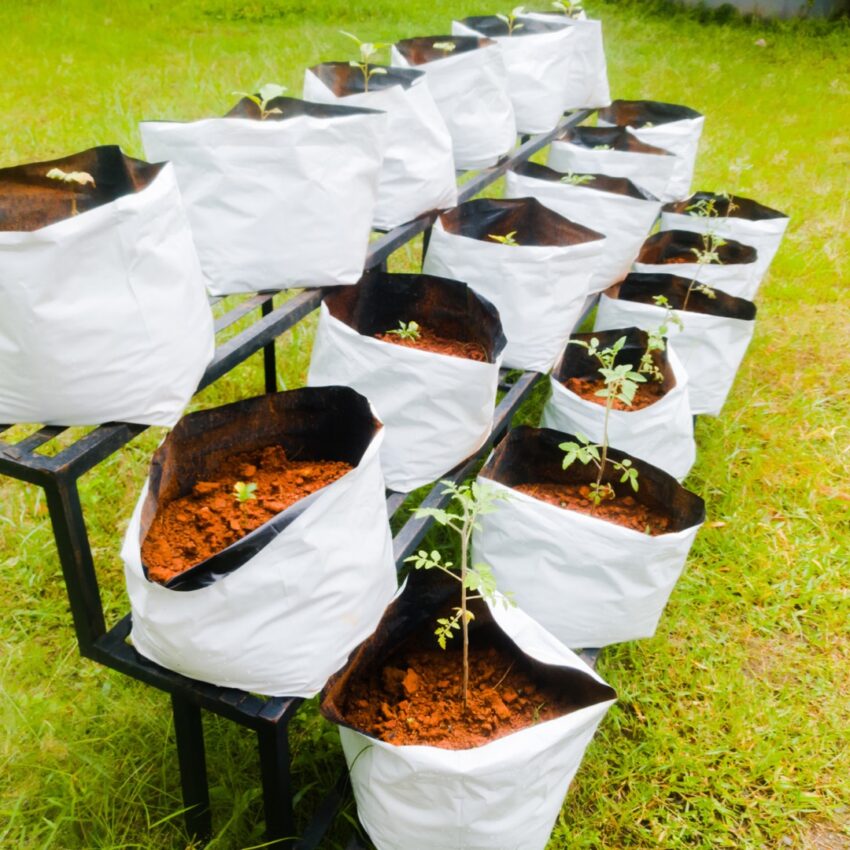
Jump to: What Are Grow Bags? |Pros & Cons using Grow Bags for Tomatoes |What Size Grow Bag? | Best Grow Bags | FAQ
This post may contain affiliate links. As an Amazon Associate, I also earn from qualifying purchases. You can read our disclosure information here–
What Are Grow Bags?
Also known as fabric pots, grow bags are just that. They’re porous fabric containers that can be filled with soil to grow plants in, and they range in volume from one gallon to 100 gallons or more.
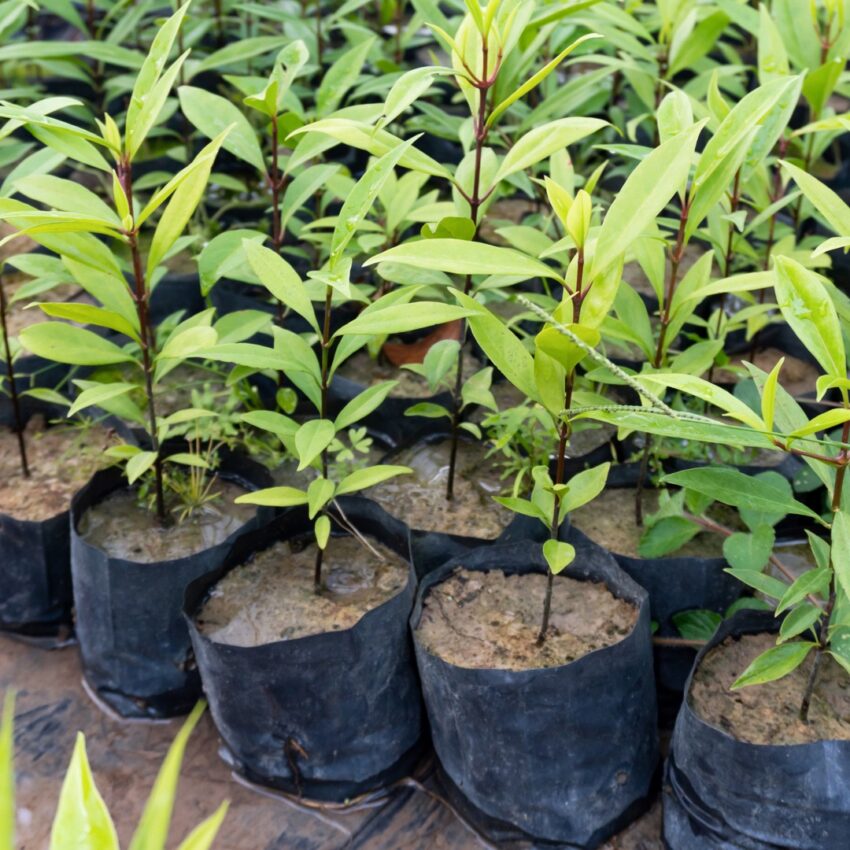
These pliable bags are perfect for gardeners who want to grow edible crops like tomatoes but don’t have a lot of space. This may also be why they’re traditionally more popular in the UK than in the US, as space is more plentiful in the US.
Still, Americans are definitely catching on to the idea, and grow bags are becoming more and more common among urban city dwellers who can’t plant their tomatoes directly in the ground.
Let’s have a look at the advantages and disadvantages of using grow bags, what size you need to grow tomatoes and how to set up your own little tomato garden on a deck or balcony using these nifty pot replacements.
Did you know? Sometimes, especially in the UK, the term ‘grow bag’ refers to growing plants directly in the plastic bags that garden soil comes in. This is not my preferred method however, especially since dedicated fabric grow bags are so handy and cheap.
Are Grow Bags Good for Growing Tomatoes?
Advantages
One of the unique advantages of using grow bags for tomatoes that gardeners appreciate is the concept of air pruning. As you may have seen yourself, in a normal planter, tomato roots can get a little wonky as the plant outgrows its container.
Tomato plants that have stayed in a small pot for too long often have roots that circle round and round the edges of the pot, sometimes practically strangling themselves (this is referred to as “root-bound”).
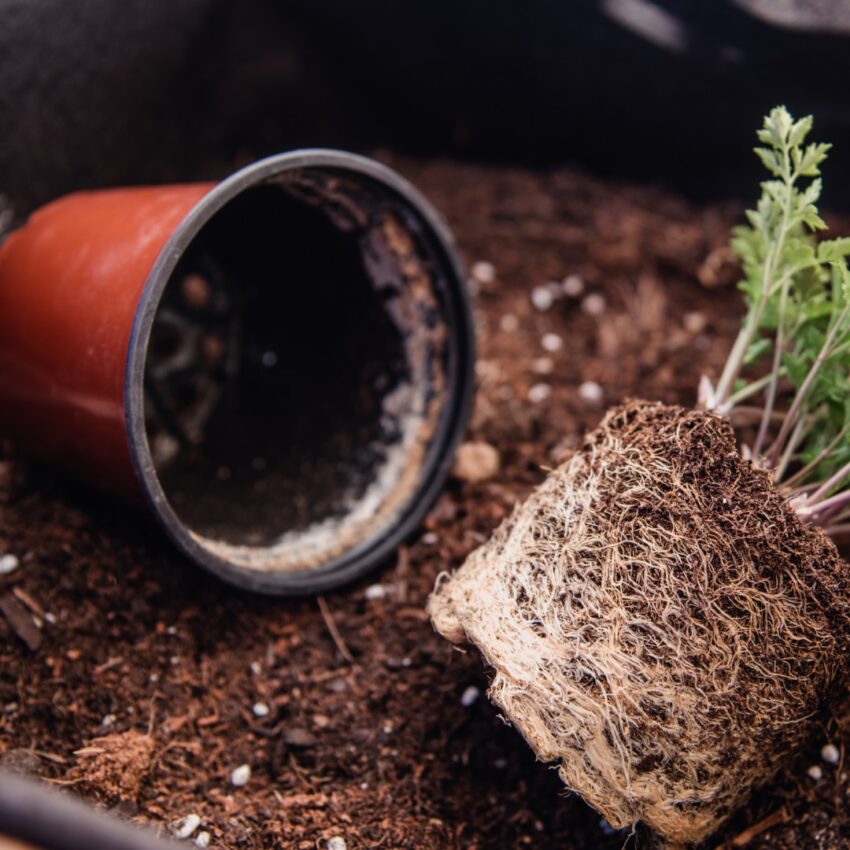
With grow bags, since they’re permeable, roots that grow outwards will eventually hit a zone in the soil that’s more airy. This causes their tips to die off, signaling that this isn’t the right way for them to grow. In grow bags the plant has room to prioritize roots in better areas as a result.
The main advantages of using grow bags for tomatoes include:
- They make gardening in small spaces possible, like growing tomatoes on your deck or balcony.
- Fantastic aeration, which really helps your plants to grow healthy roots.
- Excellent drainage, so no more risk of accidentally drowning your plants!
- They’re much cheaper than large planters or raised beds.
- They can be folded and stored once the season is up to save space.
- You can move grow bags around if need be. Most have handles.

Disadvantages
Of course, there are also some disadvantages. I wish there was such a thing as the perfect plant container, but alas.
- The soil in grow bags dries out more quickly. This means less risk of root rot, but you do have to stay on top of things during the hot dry days of Summer.
- Grow bags don’t last as long as some traditional containers. They can be reused, but not indefinitely.
- They’re not as portable as some make them out to be, because large ones do get very heavy.
- If you’re looking for something biodegradable, keep in mind that many grow bags are made using plastic-based fabrics. In some cases, though, these will be recycled plastics, so that’s something.
- On chilly nights at the start and end of the season, grow bags don’t offer the same insulation that some normal planters will.
- And, I’ll admit it, their looks are less than stellar compared to something like a pretty ceramic planter.
Pots vs Grow Bags
So, based on the above, should you be using regular pots or grow bags for your tomato crops this year?
In the end, both work, and it does depend on your own preferences. However, given their advantages and the fact that it’s easier to go large with grow bags, I’ll definitely be using a few of them this year. I encourage you to try both and figure out for yourself which you prefer!
I particularly appreciate the improved drainage: although an unglazed terracotta planter is also porous and allows excess water to evaporate.
Grow bags really do excel in preventing wet feet in your tomato plants.
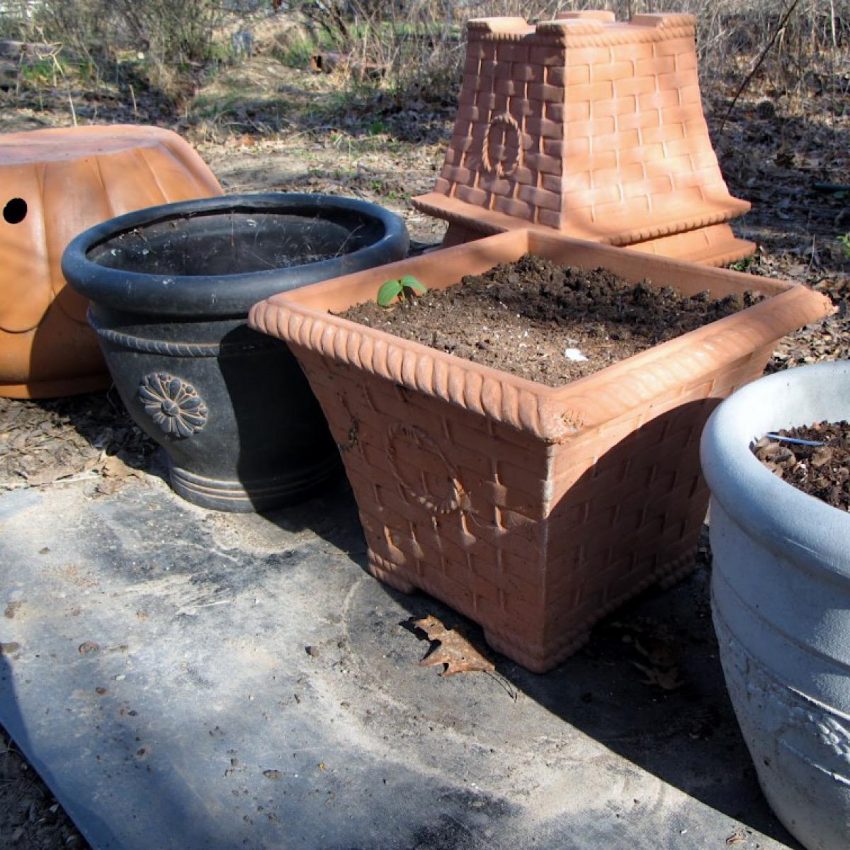
What Size Grow Bag For Tomatoes?
Determinate or indeterminate?
As discussed in my extensive post on growing heirloom tomatoes in pots, the right size container for a tomato plant depends on whether it’s determinate or indeterminate. This also applies when using grow bags.
Quick recap: determinate tomatoes grow to a limited size and put out all their fruit in one go, so you’ll get a more manageable plant but only one harvest. Most determinate tomatoes also have stocky stems and do not need trellis systems.
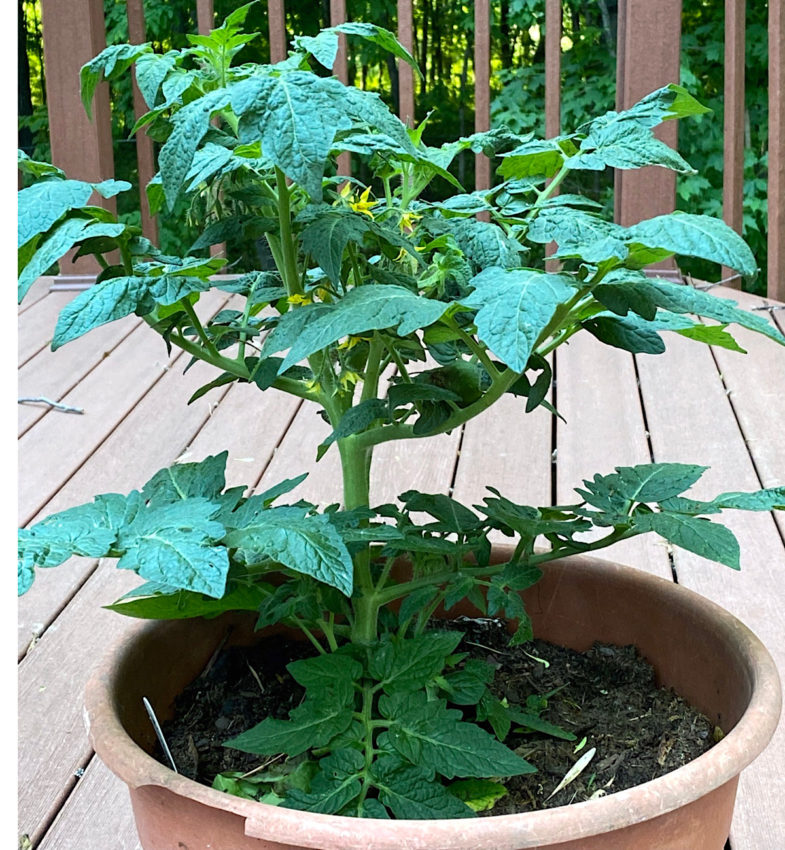
The majority of tomato varieties are indeterminate, however.
Indeterminate tomatoes are vining plants and they will keep growing until the season ends. They also keep producing fruit until they die. So a determinate tomato plant will produce a large amount of fruit over a 4-6 week period, whereas an indeterminate tomato plant produces fewer tomatoes but over a longer period of time. The end result in yield is a wash.
Due to their sprawling growth habits, indeterminates will need a trellis or other support system to keep them from falling over or breaking if you grow them in a grow bag.
You can easily look up the tomato variety you’ve got on your hands to find out if it’s determinate or indeterminate.
My favorite determinate tomatoes for containers include Bush Champion, Patio and Totem.
Great indeterminates that will do well in grow bags include the relatively compact Green Zebra, the robust heirloom Druzba, and most of the cherry tomatoes.
Grow Bag Size
Figured out whether the tomato variety you’re planning on growing is determinate or indeterminate? Great! Let’s move on to seeing what size grow bag will work well.
Let me start off by saying you’d do well to forget about your standard 5-gallon bucket: it’s just too small for your plants to ever achieve their full potential.
Many people grow tomatoes in 5-gallon buckets, and they will certainly grow, but the yield will be less as their roots will not have enough space.
When using grow bags for tomatoes, it’s a good idea to stick to something like the following:
- Determinate: 7-10 gallon grow bags should work well. Going a little bigger is definitely not a problem either!
- Indeterminate: 15-20 gallon grow bags are best. Give those roots some space to thrive.
Try to ensure the grow bag you’re using is at least around 15″ deep. Some are very shallow!
Do remember that the ones that are taller than they are wide may need a little stabilization to prevent them from falling over, as tomatoes bearing fruit can become rather top heavy.
Planting Guide for Tomatoes in Grow Bags
Now that you now what size grow bag(s) you’re going to need to get those tomatoes producing a good harvest, let’s have a look at how to successfully grow them from seed to salad.
I promise you don’t have to be a gardening guru to do it.
Supply List
Here are the basics that you’ll need to get started for one tomato plant in one grow bag:
- Tomato seedling: grow your own using the instructions in the post on germinating tomato seeds indoors. Or buy some at the local nursery!
- Grow bag: see below for some good options.
- Soil: a high-quality and well-draining mix for container growing, not just garden soil. Add some compost if you can.
- Stake or trellis: trust me, you’re going to need one with the indeterminate tomato varieties. Find out more in the post on cages vs staking vs fencing for tomatoes.
- Fertilizer: homemade is great, but commercial water-soluble fertilizers are fine too. Some time-release fertilizer like Osmocote Plus is a good addition.
Planting Steps
To get started, place the grow bag in a location that will get plenty of sun to prevent leggy stems or stunted growth, though maybe avoid the most scorching afternoon rays. The spot should be sheltered from excess wind and harsh weather.
If you grew the seedling indoors, you’ll need to harden it off first. Then, fill the grow bag with the soil you prepared and pop the seedling in there nice and deep.
Since it’ll grow very quickly, it’s a good idea to install the stake or trellis you’re using at this point. Secure it well to prevent issues in the future.
Maintenance
Your main concern while making sure your tomato plants thrive and produce lots of fruit is water. Containers always dry out more quickly than normal garden beds, but this is even more extreme with grow bags! Be sure to check the soil daily.
It’s almost impossible to overwater while using these bags, so this is one of the only situations in gardening where it’s better to err on the side of overdoing it rather than letting the soil dry out too much.
Because these plants are so vigorous, even the determinate varieties, they’ll need plenty of fertilizer. Aside from the time-release fertilizer I recommended earlier, it’s a good idea to apply a liquid option like fish fertilizer every two weeks or so. Sorry, I know it smells terrible!
Troubleshooting
Remember that, even though you don’t need a green thumb to grow your own tomatoes, it’s always possible to run into trouble along the way. It happens to the best of us.
Here are some common issues and how to deal with them:
What Are The Best Grow Bags For Tomatoes?
Most grow bags are made of non-woven fabric, often polypropylene. This refers to fibers that have been stuck together using something like a glue material, such as felt. This tends to make the bags stronger than if they would have been made using traditional weaving methods.
As much as I love jute grow bags, the sturdiness of non-woven fabric just works better for larger bags.
There are also pure plastic grow bags out there, but I’m not too keen on those myself either. I feel like I might as well go for a normal pot at that point!
The whole reason fabric grow bags are so great is because their material is highly breathable.
Here are a few options that tick all the boxes:
- Gardzen Grow Bags: I like these because they’re available in large sizes up to 25 gallons. They’re made of sturdy fabric and have handles, plus their black color means any stains won’t be visible on the bag.
- iPower Grow Bags: At a maximum size of up to 30 gallons, these are great grow bags for tomatoes. They’re made of non-woven fabric and have a flat base.
- Smirdx Grow Bags: Go big or go home! These grow bags are available in sizes of up to 100 gallons, although there are also smaller options.
- OPULENT SYSTEMS Grow Bags: These are extra heavy duty, so you won’t have to worry about them breaking. They’re available in six different sizes, between 2 and 20 gallons.
TIP: The volume in gallons listed for grow bags isn’t always accurate. It’s supposed to refer to the amount of soil that the bag can hold, but there’s no standardized sizing, so you’ll often just have to eyeball it. Luckily, half a gallon more or less won’t make or break your harvest.
FAQ
That depends! But in most cases, it’s best to stick to one plant per grow bag for an optimal harvest. Tomatoes have very large root systems, after all.
Many cherry tomato varieties and indeterminate, meaning that they need a large grow bag to accommodate their big root system. Since they don’t stop growing until the end of the season, they also require a trellis or support. You can get away with a medium-sized bag (ie. 7-10 gallons) for determinate tomato cultivars, but with most other types, it’s better to go for at least 15 gallons to avoid stunting the plant and getting a reduced harvest.
Yes, as long as you take care with the cleaning and storage. This post on How to Reuse Grow bags will help with the details.
If you like my articles about cooking and gardening, subscribe to my weekly newsletter, where I share free recipes and gardening tutorials.

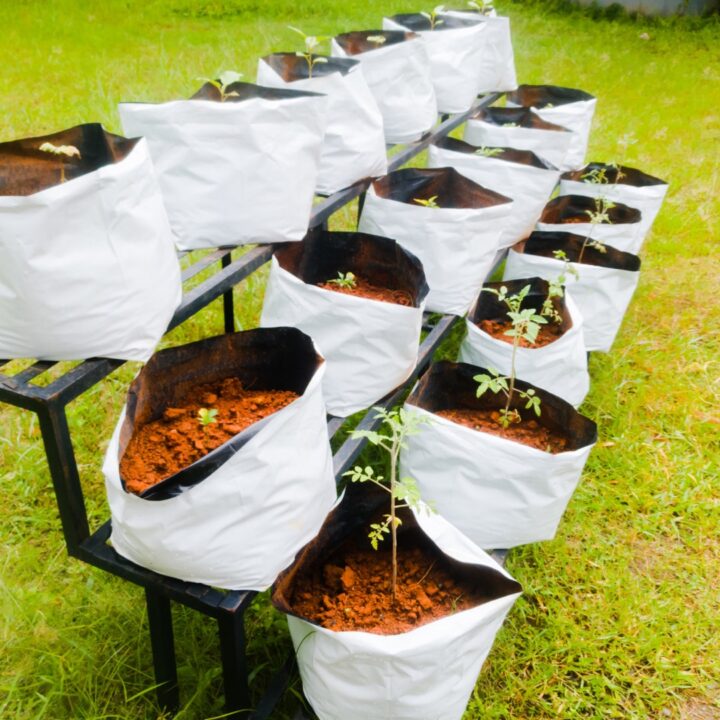
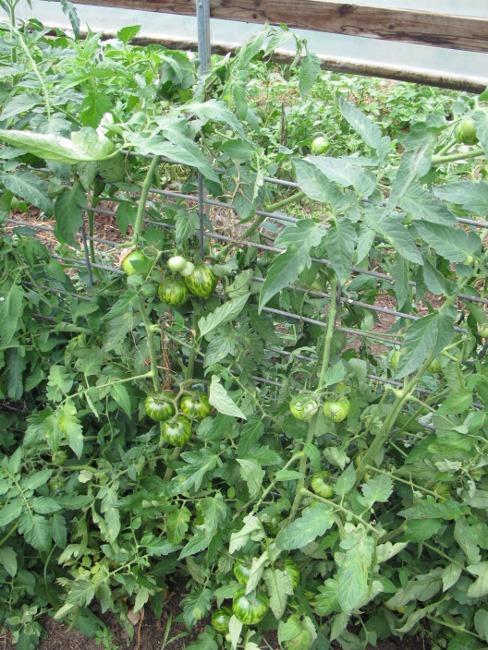
I see grow bags come in different colors like black, brown and tan, is there any preferred color for growing tomatoes?
Not really. Black will keep in the heat longer so if you live in a really hot climate I would go with green. There are people that think the color makes a big difference. I haven’t found that to be the case, but I should probably trial it with a little more robustness.
When using grow bags for growing Indeterminate heirloom tomatoes, which support system works best? Will a single 8 foot post that’s driven through the bottom of the bag into the ground below be better than a tapered cone shaped wire cage type support? The largest metal cage type supports I’ve been able to find have been 60 inches. Although it would be fairly easy to add an extension to the top of the cage using steel mesh fence material or hardware cloth.
Thanks for your help and any suggestions you might have.
Tom Brooks
I’m not a fan of cages, especially for large heirloom tomatoes, because everything gets so compressed inside, inhibiting the amount of the plant exposed to the sun. I have used a stake, which works pretty well but it really only supports the main stem. I usually use some sort of fan-type trellis where you can tie up several of the stems. Alternatively you could arrange 3 stakes in the back of the grow bag, with enough space between them that you could tie up multiple branches as they grow. Does that make sense?